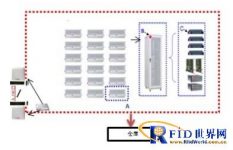
Application of RFID Technology in Zhejiang Electric Power
[ad_1]
client needs
Zhejiang Electric Power Company is a wholly-owned company of State Grid Corporation of China. It is a state-owned super-large energy supply enterprise mainly engaged in power grid operation. It is responsible for the construction, operation, management and operation of Zhejiang Power Grid, providing economic and social development and people’s lives in Zhejiang Province. Electricity supply and services. At the end of 2011, Zhejiang Power Grid had 32 500kV substations, 110 500kV transmission lines; 242 220kV public substations, 718 220kV transmission lines; 1072 110kV public substations , 2105 110 kV transmission lines. In 2011, the highest load of the whole society in Zhejiang was 53.31 million kilowatts, a year-on-year increase of 16.9%, and the electricity consumption of the whole society was 311.7 billion kilowatt-hours, a year-on-year increase of 10.5%.
At present, my country’s substation equipment inspection mainly relies on regular and regular manual inspections by inspection personnel. Due to the constraints of various factors such as climatic conditions, environmental factors, personnel quality and sense of responsibility, the inspection quality and availability rate cannot be guaranteed. At the same time, the information reflecting the operating status and equipment defects cannot be fed back in time, and the hidden dangers of the equipment cannot be found in time, causing equipment failures. In addition, it is difficult to effectively supervise the inspectors using traditional inspection management methods, and equipment accidents caused by insufficient inspections are not uncommon. Therefore, in order to ensure the smooth progress of line and equipment inspection and reduce unnecessary economic losses, the voice of reforming the traditional and backward inspection methods is getting louder and louder. How to supervise the presence and working status of the inspection routes of the inspectors and the standardized management of the inspection work has become a common concern and urgent problem for power grid managers.
Scheme realization
System Hardware Architecture
Including: fixed reader, antenna,RFIDHandheld devices, tags and servers;
Data exchange method: It can be implemented in two ways:
Online data exchange, real-time transmission of field data back to the background information system through a fixed reader for processing and analysis
Offline data exchange, after collecting the data in the field through the handheld device, import it into the background information system for processing and analysis
Warehouse management – in and out
A fixed reader is installed at the door of the warehouse, and the information will be read in real time when the carrier frequency card enters and leaves the warehouse.
RFID tags are attached to fixed shelves and products in the warehouse.

Warehouse Management – Inspection and Inventory
Find Goods (Pick Up) Input the ID of the goods to be searched in advance, and then search for goods according to the system instructions.
Inventory Load the list of goods to be counted in advance, and then carry out the inventory operation according to the system instructions.
Computer room management

Anti-metal label
This solution adopts the most popular non-contact IC card. It is a chip card that can read and write information without physical contact. The instantaneous energy required for reading and writing information is given byReaderProvided, the sensing distance is 0~3M. Because the card has a multi-purpose function. Compared with traditional card technology, it has the following advantages:
•Long service life and low maintenance costs
•Easy to use, long reading distance
• Safe and reliable
• One card for multiple purposes
• Improve the image of government and business
• Better cost performance
System Features
Based on the RFID unified technology platform, combined with advanced radio frequency automatic identification technology, handheld computer technology and mobile communication technology, it is a professional application product for line equipment inspection management. The system also has a series of workflow processing functions such as inspection plan arrangement, automatic assessment of inspection in place, inspection data recording, work status supervision, defect review, maintenance dispatch, defect elimination acceptance, data summary report, etc. There are production MIS and GIS systems for seamless connection. Through this system, line equipment maintenance and management personnel can effectively understand and check the work of line inspections, classify the defects of lines in a timely manner, improve the operation safety of communication facilities, reduce production and operation costs, and improve work efficiency. The system consists of four parts: main station system, PDA, CF RFID read-write card and RFID electronic label attached to the equipment. The system adopts advanced and mature computer technology, wireless communication and barcode identification technology, combined with the standardized inspection of substations, to minimize the problems of missed inspections and inspections not in place.
The mobile inspection system architecture adopts advanced technology to achieve in-place supervision. Using the most advanced identification technology – RFID radio frequency identification technology, it is convenient to read the RFID electronic label information through the portable data collector (PDA + read-write card), which perfectly solves the supervision in place.
1. The system supports inspection services of various sites. Support the inspection work of various forms of substations such as centralized control stations and individual stations, and meet the inspection requirements of different situations.
2. Customizable and standardized inspection routes and inspection items can meet different types of inspection requirements.
3. Scientific and rational design of inspection business database and project supervision, effectively improve the quality of inspection work, and ensure the standardization, standardization and informatization of inspection content and results.
4. Standard defect library and process management ideas are convenient for inspectors to characterize defects and further improve defect management.
The comprehensive use of various technical means makes the mobile inspection system have strong vitality and application prospects, such as portable handheld terminals, wireless communication and so on.
[ad_2]



